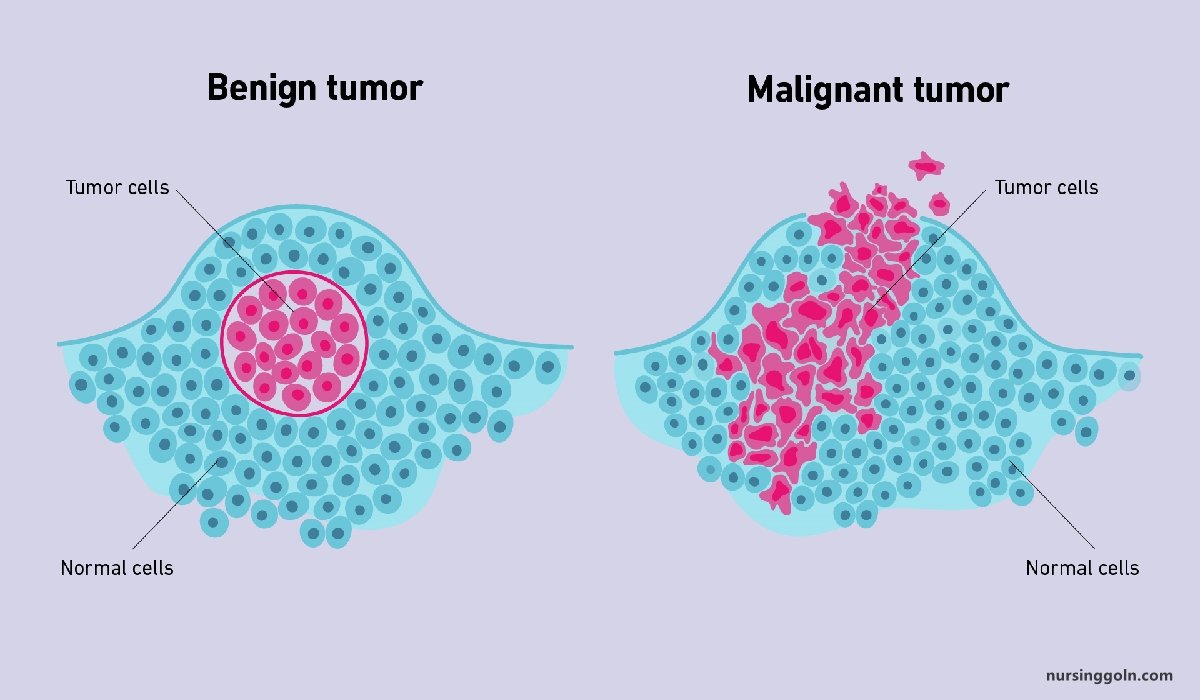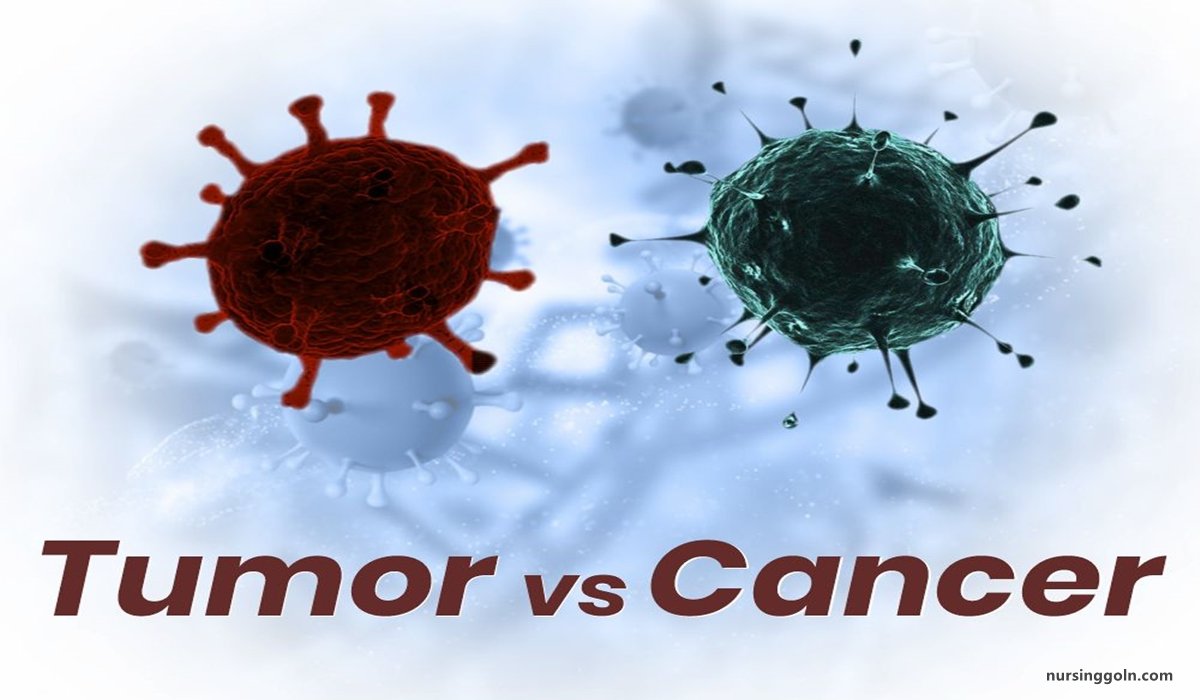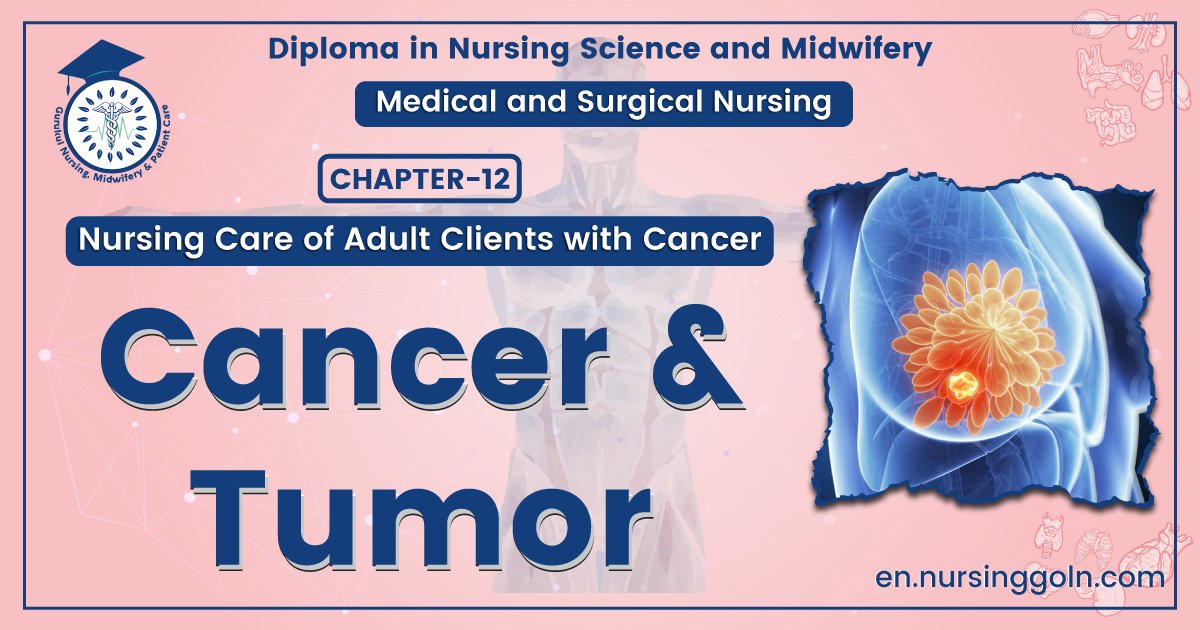Cancer and Tumor – This course is designed to understand the concept of community health nursing: nurses’ roles and interventions in family health, school health, occupational health, environmental health, elderly health care, gender issues, disaster management and principles and terminology of epidemiology. The aim of the course is to acquire knowledge and skills in community health nursing.

Cancer and Tumor
Cancer is a generic term for a large group of diseases characterized by the growth of abnormal cells beyond their usual boundaries that can then invade adjoining parts of the body and/or spread to other organs. Other common terms used are malignant tumours and neoplasms.
Cancer can affect almost any part of the body and has many anatomic and molecular subtypes that each require specific management strategies.
Cancer is the second leading cause of death globally and accounted for 8.8 million death in 2015. Lung, prostate, colorectal, stomach and liver cancer are the most common types of cancer in men, while breast, colorectal, lung, cervix and stomach cancer are the most common among women.
The word cancer is derived from the Latin word for crab because cancers are often very irregularly shaped, and because, like a crab, they “grab on and don’t let go.” The term cancer specifically refers to a new growth which has the ability to invade surrounding tissues, metastasize (spread to other organs) and which may eventually lead to the patient’s death if untreated.
An oncology nurse is a specialized nurse who cares for cancer patients. These nurses require advanced certifications and clinical experiences in oncology further than the typical bachelorette nursing program provides.
Cancer/ Oncology nursing care can defined as meeting the various needs of oncology patients during the time of their disease including appropriate screenings and other preventative practices, symptom management, care to retain as much normal functioning as possible, and supportive measures upon end of life
(Ref by- http://www.who.int/cancer/en)
Definition of Cancer:
Cancer is group of more than 100 distinct diseases characterized by the uncontrolled growth of abnormal cells in the body.
Or,
Cancer is a group of diseases involving abnormal cell growth with the potential to invade or spread to other parts of the body
Or,
Cancer is a disease process that begins when an abnormal cell is transformed by the genetic mutation of the cellular DNA.
Or,
Cancer is the uncontrolled growth of abnormal cells anywhere in a body. These abnormal cells are termed cancer cells, malignant cells, or tumor cells. These cells can infiltrate normal body tissues.
Definition of Neoplasia:
The term neoplasia refers to a mass that has developed due to abnormal cell or tissue growth. Neoplasia refers to various types of growths including non-cancerous or benign tumors, precancerous growths, carcinoma in situ and malignant or cancerous tumors.
Definition of Neoplasm:
The term neoplasm is derived from a combination of the Greek words “neo” meaning new and “plasma” meaning formation. One widely used definition of neoplasm is that described by the British oncologist R.A. Willis which stated: “A neoplasm is an abnormal mass of tissue, the growth of which exceeds and is uncoordinated with that of the normal tissues, and persists in the same excessive manner after cessation of the stimulus which evoked the change.”
Definition of Tumors:
Tumors are groups of abnormal cells that form lumps or growths. They can start in any one of the trillions of cells in our bodies. Tumors grow and behave differently, depending on whether they are cancerous (malignant), non-cancerous (benign) or precancerous.

Types of Tumors:
| Benign Tumors/ Non-Cancerous Tumor: | Tumors that aren’t cancerous are called non-cancerous tumors. Non- cancerous tumors:
|
| Premalignant/ Precancerous: | A premalignant tumor is not yet cancerous but appears to be developing the properties of cancer. |
| Malignant tumors / Cancerous Tumor | Cancer can start in any part of the body. When cancer cells form a lump or growth, it is called a cancerous tumor. A tumor is cancerous when it:
|
Difference between Benign and Malignant Tumor:
| Traits | Benign Tumor | Malignant Tumor |
| Definition | These are not cancerous and cannot spread. A benign tumor will remain in its current form. They do not generally return after being removed. | Malignant tumors are cancerous. They can grow, spread, and get worse. |
| Differentiation /anaplasia | Well differentiated, Structure sometimes typical of tissue of origin | Some lack of differentiation with anaplasia structure often atypical |
| Rate of growth | Usually progressive an slow: may come to a standstill or regress: mitotic figures rare and normal | Erratic and may be slow to rapid: mitotic figures may be numerous and abnormal |
| Local invasion | Usually cohesive expansile well- demarcated masses that do not invade or infiltrate surrounding normal tissues | Locally invasive, infiltrating surrounding tissue: sometimes may be seemingly cohesive and expansile |
| Metastasis | Absent | Frequently present; the larger and more undifferentiated the primary, the more likely are metastases |
Most Common Types of Benign Tumors
- Adenomas (epithelial tissue that covers the organs and glands)
- Meningiomas (brain and spinal cord)
- Fibromas or fibroids (connective tissue of any organ – most commonly found in the uterus)
- Papillomas (skin, breast, cervix, and mucus membranes)
- Lipomas (fat cells)
- Nevi (moles)
- Myomas (muscle tissue)
- Hemangiomas (blood vessels and skin)
- Neuromas (nerves)
- Osteochondromas (bones) Depending on the location and size of a benign tumor, treatment might not be necessary. Doctors will monitor it, track patient symptoms and do tests at specific intervals.
Characteristics of Benign Tumor:
- Stay in one place and don’t spread to other parts of the body.
- Don’t usually come back after they are removed.
- Tend to have a regular and smooth shape and have a covering called a capsule.
- May be moved easily in the tissue.
- Slow growth
- Resemblance to tissue of origin (well differentiated)
- Circumscription
- Lack of invasion
- Absence of metastases

Types of Malignant Tumor:
1. Carcinoma: begins in the skin or tissues in internal organs
2. Sarcoma: begins in bone, fat, cartilage, muscle, blood vessels or other connective tissues in the body
3. Leukemia: malignancy that begins in bone marrow or other blood-forming tissue, causing abnormal cells to enter the bloodstream
4. Lymphoma and multiple myeloma: begin in cells of the immune system
5. Central nervous system cancers: malignancies that begin in the spinal cord or brain tissues
Ways to spread of malignant tumors:
Invasion and Metastasis of malignant tumors:
- Mechanical pressure exerted by rapidly proliferating neoplasms force fingerlike projections of tumor cells into surrounding tissue and interstitial spaces
- Malignant cells are thought to possess or produce specific destructive enzymes (proteinases), such as collagenases (specific to collagen), plasminogen activators(specific to plasma) and lysosomal hydrolyses
Lymphatic Spread:
- Tumor emboli enter the lymph channels by way of the interstitial fluid, which communicates with lymphatic fluid
- Malignant cells penetrate lymphatic vessels by invasion
- Malignant cells either lodge in the lymph nodes or pass between the lymphatic and venous circulations.
Hematogenous Spread:
- Dissemination of malignant cells via the blood stream and is directly related to the vascularity of the tumor
- Malignant cells attach to endothelium and attract fibrin, platelets, and clotting factors to seal themselves from immune system surveillance
- Malignant cells to enter the basement membrane and secrete lysosomal enzymes.
Definition of Oncology:
The term oncology literally means a branch of science that deals with tumours and cancers. The word “onco” means bulk, mass, or tumor while “-logy” means study.
Definition of Cancer/Oncology Nursing:
Cancer/Oncology nursing can be defined as meeting the various needs of oncology patients during the time of their disease including appropriate screenings and other preventative practices,
symptom management, care to retain as much normal functioning as possible, and supportive measures upon end of life.
Or,
Cancer nursing can be defined as nursing which is concerned with the care of cancer patients of all ages, whatever type of cancer they suffer from, and whatever the stage of their illness. The cancer nurse has successfully completed specialist post-qualification education in cancer nursing, which builds upon initial generalist nursing education.
Purposes of Cancer Nursing/Oncology Nursing:
- The cancer/oncology nurse provides health education about cancer prevention, prepares patients for the different forms of treatment, including surgery.
- The oncology nurse cares for them following their treatment or surgery.
- The cancer nurse also cares for patients for whom it has been recognized there is no cure and who are receiving palliative care.
Read more:
